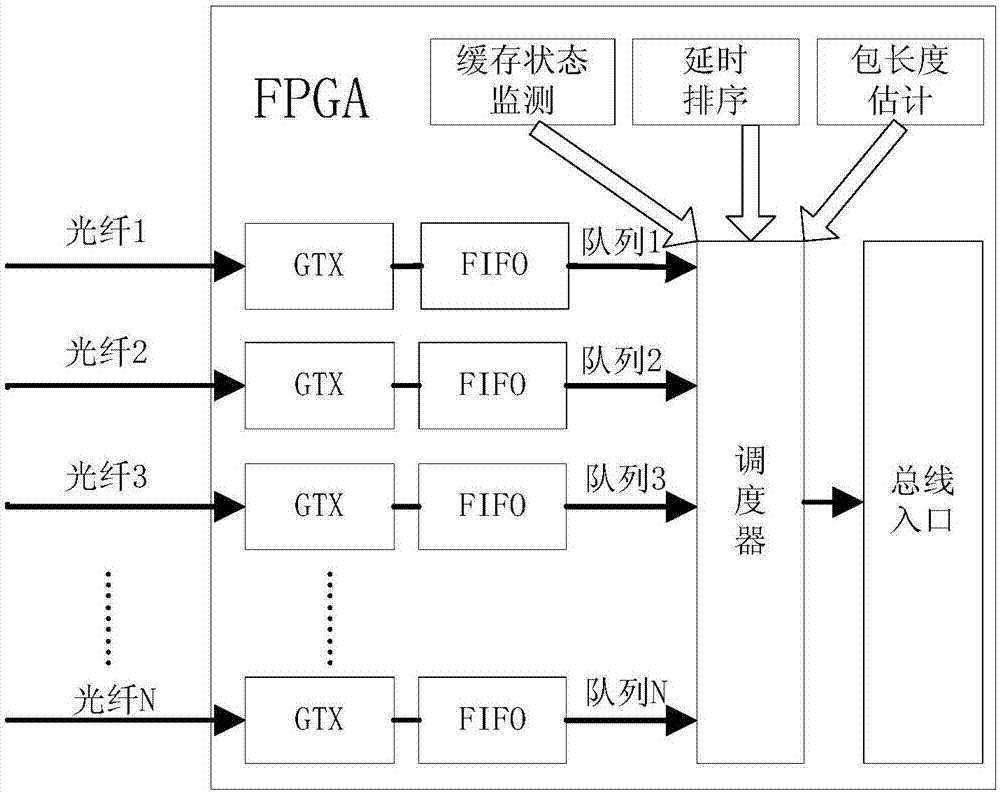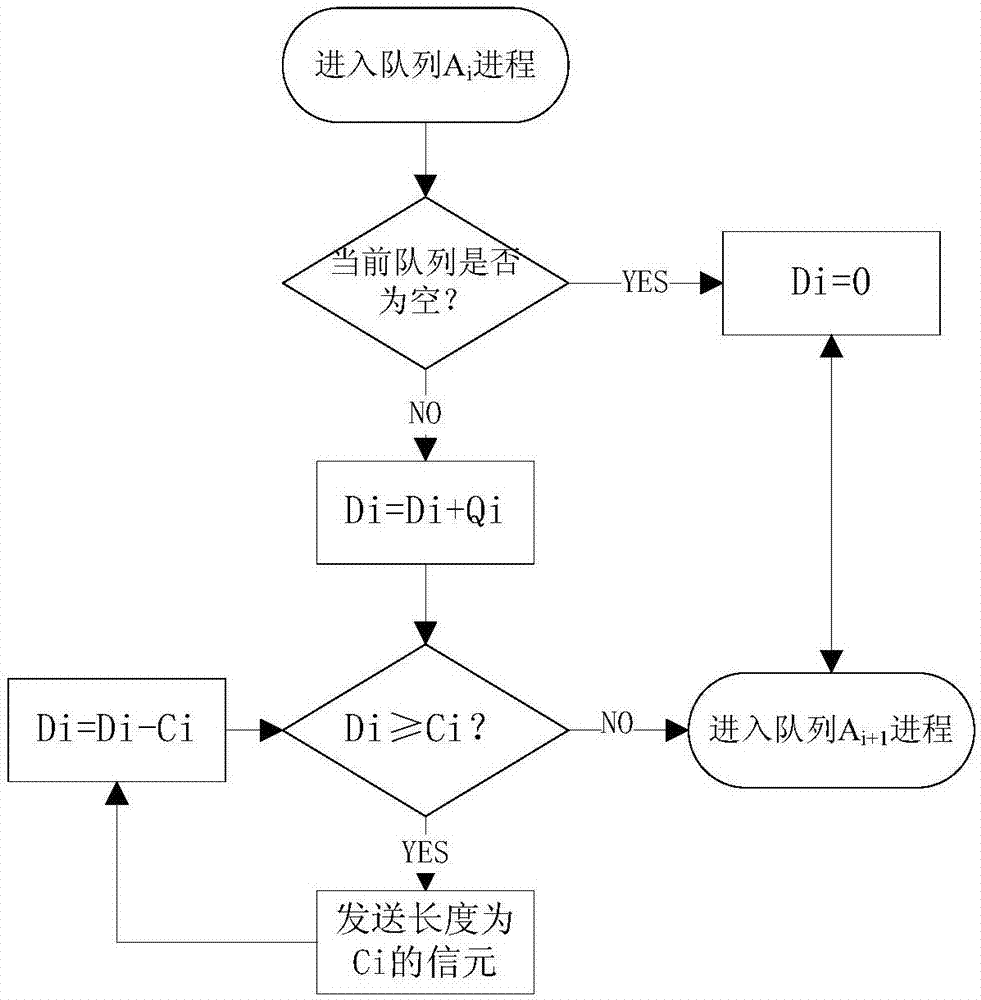Adaptive round robin scheduling method for multiple optical fiber input queues
A technology of input queue and round-robin scheduling, which is applied in the direction of optical fiber transmission, selection device of multiplexing system, electrical components, etc.
- Summary
- Abstract
- Description
- Claims
- Application Information
AI Technical Summary
Problems solved by technology
Method used
Image
Examples
Embodiment Construction
[0013] The invention is mainly used for round-robin scheduling of multi-fiber input queues. This method uses the adaptive weighted balance round-robin scheduling method, according to the state of each queue, dynamically adjusts the allocation weight of the queue, the cell length and the polling order, and is implemented by FPGA, as shown in the attached figure 1 As shown, the specific implementation method is:
[0014] 1. FPGA uses GTX to receive N-channel optical fiber data buffer into the corresponding FIFO to form queue A 1 ~A N , and record the time stamp T for each packet header received i,j , where i is the queue number, and j is the jth packet of this queue. Set the desired delay τ for each queue i , 1≤i≤N. In the initial state, the weight Q assigned to each queue i , initial difference count D i and cell length C i same. Among them, the selection of the cell length should consider the specific characteristics of the bus. If the cell length is too small, it wil...
PUM
 Login to View More
Login to View More Abstract
Description
Claims
Application Information
 Login to View More
Login to View More - R&D
- Intellectual Property
- Life Sciences
- Materials
- Tech Scout
- Unparalleled Data Quality
- Higher Quality Content
- 60% Fewer Hallucinations
Browse by: Latest US Patents, China's latest patents, Technical Efficacy Thesaurus, Application Domain, Technology Topic, Popular Technical Reports.
© 2025 PatSnap. All rights reserved.Legal|Privacy policy|Modern Slavery Act Transparency Statement|Sitemap|About US| Contact US: help@patsnap.com


